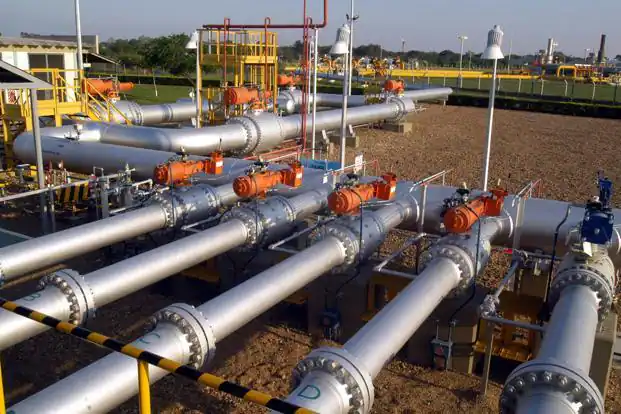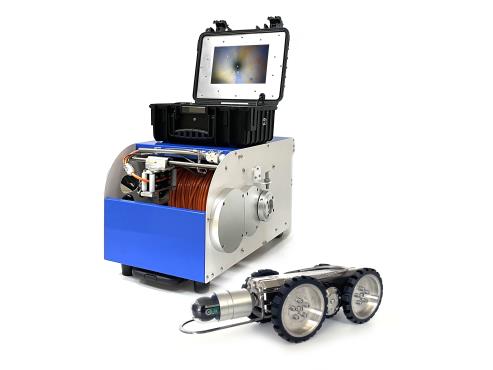How Pipeline Inspection Used to Be Done
Traditionally, pipeline inspection involved manual labor, visual checks, and basic mechanical tools. Workers would physically enter pipelines or use rudimentary devices to detect issues, often having to navigate confined spaces. This method, though functional, had several drawbacks, including safety risks, limited accessibility, and lower accuracy.
Traditional Methods
- Manual Inspection: Inspectors would physically enter pipelines or use handheld devices to check for leaks, corrosion, and other issues. This method is labor-intensive and poses significant safety hazards.
- PIGs (Pipeline Inspection Gauges): These are mechanical devices sent through the pipeline to detect anomalies. While effective, PIGs have limitations in terms of reach and the types of issues they can detect.
- Visual and Acoustic Methods: Using cameras and sound waves to inspect pipelines is another traditional method. However, these methods often require stopping pipeline operations, leading to downtime and inefficiency.
How Robotics Are Changing Pipeline Inspection
Robotics have introduced a paradigm shift in how pipeline inspections are conducted, allowing robots to perform inspections more efficiently and accurately. These sophisticated machines offer numerous advantages over traditional methods, making pipeline maintenance more efficient, safe, and accurate.
Types of Robotic Technologies
- Crawler Robots: These robots move through pipelines on wheels or tracks, using cameras and sensors to detect issues. They are particularly effective for long-range pipe vision, providing efficiency, accuracy and cost-effectiveness in diagnosing problems and planning repairs.
- Drones: Unmanned aerial vehicles can inspect pipelines from above, particularly useful for overground pipelines.
- Inline Inspection Robots: Similar to PIGs but more advanced, these robots travel inside the pipeline, offering real-time data on its condition.
- Autonomous Underwater Vehicles (AUVs): For underwater pipelines, AUVs provide a reliable inspection solution, capable of operating at great depths.
Benefits of Robotic Inspection
The integration of robotics into pipeline inspection has revolutionized the industry, providing numerous advantages over traditional methods, especially in hazardous areas. Let's take a closer look at some of the key benefits that make robotic inspection a game-changer.
More Accurate
Robots equipped with advanced sensors and imaging technology can detect even the smallest anomalies that manual inspection might miss. This ensures early identification of issues like micro-cracks and corrosion, allowing for timely maintenance and preventing larger problems.
Safer in Confined Spaces
Robots can access hazardous or hard-to-reach areas, including harsh environments, reducing the need for human inspectors to enter dangerous environments. This minimizes the risk of accidents and exposure to toxic substances, ensuring better safety for workers.
More Efficient
Robotic inspections can be performed without halting pipeline operations, minimizing downtime and improving productivity. Robots can operate continuously and cover large areas quickly, leading to faster and more comprehensive inspections.
Cost-Effective
Although the initial investment in robotic technology can be high, the long-term savings from reduced downtime, fewer accidents, and more accurate inspections are substantial. Early detection and continuous monitoring help prevent costly repairs and operational disruptions.

Introducing JIUTAI Technology
When it comes to advanced pipe inspection robots, JIUTAI Technology stands out as a leading provider. They offer a range of innovative products designed to make pipeline inspection more efficient and accurate.
Pipe Inspection Crawler Robots
JIUTAI's Pipe Inspection Crawler Robots are designed to navigate through pipelines of various diameters, equipped with high-resolution cameras and sensors to detect any anomalies. These crawlers are perfect for accessing hard-to-reach areas, ensuring comprehensive inspection without compromising safety.
Pipe Push Rod Borescope Cameras
The Pipe Push Rod Borescope Cameras from JIUTAI offer a flexible solution for inspecting pipelines, utilizing advanced pipe inspection technology to provide real-time visual feedback and high-quality imaging. These cameras can be pushed through pipes, providing real-time visual feedback and high-quality imaging to identify any potential issues. This technology is especially useful for smaller diameter pipelines where crawler robots might not fit.
PTZ Manhole Pole Cameras
For inspecting manholes and vertical shafts, JIUTAI's PTZ Manhole Pole Cameras provide a versatile and efficient solution. These cameras offer pan, tilt, and zoom capabilities, allowing inspectors to get a detailed view of the interior of manholes and vertical pipelines without the need for confined space entry.
What's Next for Robotic Pipeline Inspection?
The future looks promising for robotic pipeline inspection, with continuous advancements in technology making these robots more capable and accessible. Innovations such as artificial intelligence and machine learning are expected to further enhance the accuracy and efficiency of these systems, enabling more informed decisions.
New Technologies on the Horizon
- AI and Machine Learning: Integrating AI can help robots learn from previous inspections, improving their ability to detect anomalies and predict future issues.
- 3D Mapping and Imaging: Advanced imaging technologies can create detailed 3D maps of pipelines, providing a comprehensive view of their condition.
- Real-Time Data Analytics: Enhanced data processing capabilities will allow for real-time analysis and quicker decision-making during inspections.
Wrapping Up
Robotic technology is revolutionizing the field of pipeline inspection, offering unparalleled accuracy, safety, and efficiency, particularly in the oil and gas industry. Companies like JIUTAI Technology are at the forefront, providing advanced solutions that make pipeline maintenance more effective. As technology continues to advance, we can expect even greater innovations that will further transform this essential industry. Embracing these advancements not only improves pipeline maintenance but also ensures a safer and more reliable infrastructure for the future.
FAQs
1. How do robotic inspections compare in cost to traditional methods?
While the initial investment in robotics can be high, the long-term savings from reduced downtime, fewer accidents, and more accurate inspections make them cost-effective in the long run.
2. Are robots capable of inspecting all types of pipelines?
Yes, there are different types of robots designed to inspect various kinds of pipelines, including underground, underwater, and overground pipelines.
3. How safe are robotic inspections?
Robotic inspections significantly reduce the need for human inspectors to enter hazardous environments, thereby enhancing overall safety.






